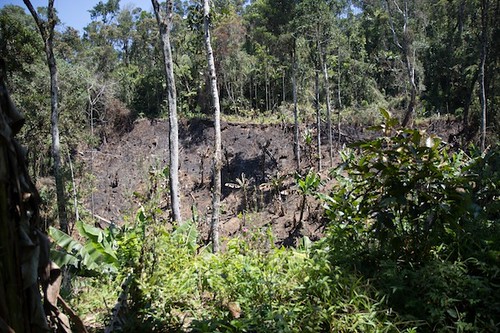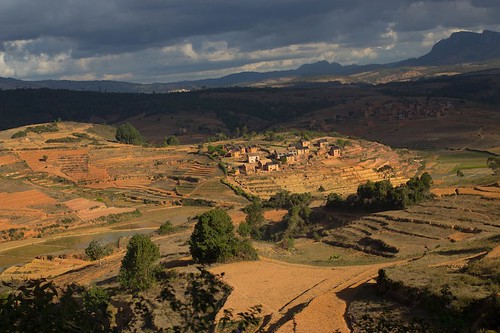The night is cool, the sun has just set, and the trees are swaying slightly in the wind. Every few minutes a truck drives by with a delivery: usually dropping off a load of tourists or a few dozen crates of beer. A few friends and I are sitting in the local bar eating fries, a rare treat for us, and drinking cokes. It’s just a normal night, until a fire starts on the other side of the hill. The smoke envelops the entire valley, and the fire lights up the remaining forest in an orange glow. The open air restaurant smells like smoke, and visibility is remarkably low. Although I look around, confused and a bit worried, nobody else reacts. This is a normal night, and the fires are a normal practice. These fires aren’t small kitchen fires gone wrong - this is the way the agriculture here works.


The Malagasy word for this practice is tavy. Tavy is the description of the typical agriculture here. Most farmers in the area grow banana trees or rice. In the process of growing rice, the fields have to be flooded, and most of the soil’s nutrients are drawn away. A farmer can continue using the same plot for a maximum of three years. Each year the crop yields decrease until the farmer has to clear another patch of forest to create a new set of fields.
But rice isn’t the only crop that causes this deforestation. Any type of subsistence agriculture has this effect. This issue is mostly visible in overpopulated tropical countries, because as population density increases, there is more demand for land. As more land is needed, the fallow period for each field declines, and the soil is eventually left completely spent. Along the eastern side of Madagascar, there are several other things planted in these fields. A common pattern is as follows. The first year, all the trees are cut down for wood. A few years later, small saplings that have arisen from the empty land are cut down for charcoal. The next year, the even smaller trees are burnt for a quick flush of nutrients, to allow grass to grow to feed the cattle and zebu.

Driving along the road leading to the nearby national park, you’ll see rice fields galore, along with large areas with nothing but red soil. These are from past rice/grass/banana fields. Since each piece of land can only be used for about three years, after the harvest it is abandoned and left completely bare for the next few years. It’s becoming increasingly worrisome to many conservationists, as they try to protect the forest from being cut down to create more fields. As Madagascar’s population increases, more and more forests are being cut down. In the two months that I’ve been in Madagascar, my path through the secondary forest near Ranomafana National Park has been littered with three newly burnt fields.

The practice of tavy affects the forest more long term than many people are aware of. Since most tropical forests have nutrient poor soil to begin with, when this method of extracting all the nutrients possible is used, it leaves the soil very nutrient poor. Then any flooding takes away all remaining nutrients, and, when tavy is practiced on a large scale, with hundreds of adjacent plots it also causes large scale erosion, because there are no roots or canopies to stop the steady flow of water. The complete lack of nutrients then causes desertification, and nothing will grow there again for another few generations.
Tavy can take a plot of land from primary forest to unusable land. There are ways around this though. Many NGO’s are working on spreading the word among farmers about how they can plant their crops in a way that will allow them to use their land more efficiently. If this continues, the forests of Madagascar could be completely replaced by stretches of barren red land.

Anne Driscoll is a member of the Youth Travel Blogging Mentorship Program.
All photos showing secondary forest, and forest after/during slash and burn, courtesy and copyright Anne Driscoll
